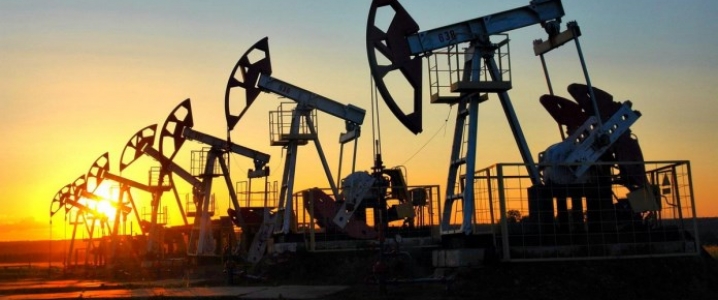www.aljazeerah.info
Opinion Editorials, April 2017
Archives
Mission & Name
Conflict Terminology
Editorials
Gaza Holocaust
Gulf War
Isdood
Islam
News
News Photos
Opinion Editorials
US Foreign Policy (Dr. El-Najjar's Articles)
www.aljazeerah.info
Supply Crunch Or Oil Glut: Investment Banks Can't Agree By Tsvetana Paraskova Oil Price, Al-Jazeerah, CCUN, April 17, 2017 |
 |
 |
|
In recent years, U.S. shale has thrown in another unknown in
the mix of factors driving the price of oil. This year, shale output
forecasts combine with OPEC's production cuts, geopolitical factors, and
unexpected outages to further complicate supply/demand and oil price
forecasts by Wall Street's major investment banks.
The biggest
banks remain
bullish on oil prices, expecting moderate price gains by the end of
the year, even after last month WTI prices dropped below $50 for a
couple of weeks.
But analyst projections about oil global supply
and demand are increasingly diverging, because expectations of the
combined effects of OPEC's cuts, U.S. shale production, new oil
discoveries, and new project start-ups also differ a lot.
Goldman Sachs, for example, expects a "material
oversupply" in 2018-2019, due to the increase in mega projects
production in 2017-19 as a result of the record spending in those
projects between 2011 and 2013. Short-cycle shale output will also add
to the glut, says Goldman, projecting an additional 1 million bpd to
global supply by 2018-2019 coming from the mega projects sanctioned
before the oil price crash and from U.S. shale output.
Morgan
Stanley, however, begs to differ, and has recently
said that "by 2020, we estimate that [around] 1.5 million bpd of
demand will need to come from projects that have not been sanctioned
yet, but that have break-even oil prices of $70-75 a barrel."
UBS, for its part, expects a 4-million-bpd supply gap by 2020.
"Beyond 2017, the impact of a collapse in longer-cycle conventional
investment over 2014-16 begins to be felt. 2015 saw just six major
upstream projects totaling [some] 0.6 million bpd ... versus the 3-4
million bpd average, and 2016 has seen just one major liquids project
sanctioned," UBS strategist Jon Rigby told Reuters.
Analysts and
industry bodies warn of a supply crunch, especially after 2020, when the
effect of the significantly lowered investments in conventional projects
during the downturn will show. The International Energy Agency (IEA)
sees a
shortage in oil supply after 2020, "unless new projects are approved
soon". According to the IEA, supply could lag demand in a few years,
which could lead to a surge in oil prices.
"In the next few
years, oil supply is growing in the United States, Canada, Brazil and
elsewhere but this growth could stall by 2020 if the record two-year
investment slump of 2015 and 2016 is not reversed. While investments in
the US shale play are picking up strongly, early indications of global
spending for 2017 are not encouraging," the IEA said in a
report last month.
According to
Wood Mackenzie,
although projects around the world slated for final investment decisions
(FIDs) will double this year compared with 2016, and prospects for 2017
are largely looking good, "the longer-term deepwater pipeline is more
challenged."
The oil price slump has not only deferred some
investment decisions, it has also forced companies to scale back
exploration spending for conventional oil.
Last year, total
global discovered volumes of oil and gas combined hit their lowest since
the 1940s, according to
Rystad Energy. The Oslo-based consultancy sees exploration activity
slowly picking up from 2018.
Although last year's low discovery
volumes won't have an immediate effect on global supply, they could
influence supply a decade or so into the future because of the long
lead-time in sanctioning conventional oil developments and actual
production start-ups.
Meanwhile, short-cycle U.S. shale is now
more flexible in scaling back or resuming production, depending on the
price of oil and well economics. This adds another conundrum for
investment banks in predicting oil prices - how fast U.S. supply could
grow and how many barrels it could add on the global oil market.
Link to original article:
http://oilprice.com/Energy/Energy-General/Supply-Crunch-Or-Oil-Glut-Investment-Banks-Cant-Agree.html
***
|
|
|
|
||
|
||||||


